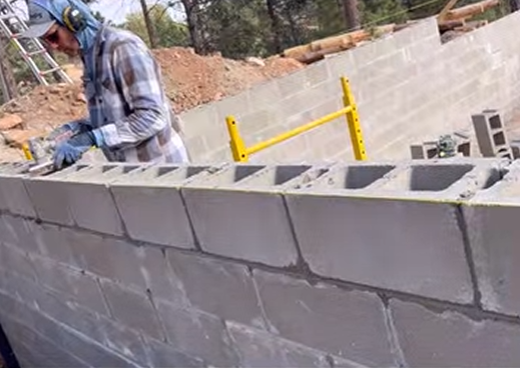The Leading Bulldozer Attachments
8 Min read
)
October 16, 2022
The primary purpose of a bulldozer is to clear the ground. Thanks to various attachment options, bulldozers can perform various tasks. The most popular attachments are various blades, each serving a unique purpose.
The primary purpose of a bulldozer is to clear the ground. Thanks to various attachment options, bulldozers can perform various tasks. The most popular attachments are various blades, each serving a unique purpose.
The attachment you choose depends on the task at hand. With so many options, deciding which bulldozer attachment is right for you can be difficult. Let's dive into some of the best options and discover how these helpful attachments make your work site more efficient and productive.
What Are Bulldozer Blades Used For?
Bulldozer blades push materials such as rocks, dirt, snow and sand to clear land on a work site. Blades are the most common attachments for dozers, and choosing the right blade for the task is the key to your success. Because different blades excel on specific types of rock and ground cover, it's important to have a thorough understanding of the land you'll be working on and the functions of each blade.
Why Use Dozer Attachments?
:format(webp))
Using dozer attachments is an easy and excellent way of giving your machine more versatility and allowing it to do other tasks. With adding just one attachment, your machine can go from clearing land to doing snow to making wood chips.
The most popular blade attachments for dozers are straight, U, SU, and angle blades. Using the right blade for the job will optimize your productivity, save fuel, and protect your equipment from excessive wear and tear from debris.
Straight Blade
Also known as an S blade, these dozer attachments are attached to the bulldozer arms by the back corners of the blade. Angle braces stabilize the position of the dozer blade and might include a hydraulic tilt cylinder for adjustment. The bulldozer operator can use this tilt feature to steer it to achieve crowning and ditching.
Although a bulldozer cab may not be able to carry as large of a load with an S blade, the operator can use a push trough to improve its carrying capability. With its rugged blade, smooth, and heavyweight, an S blade works best with medium or hard compact materials.
Since it is width is ideal for cutting through rugged landscapes, an S blade is excellent for:
Ditching
Shaping
Backfilling
Stumping
Stripping
Depending on the quality of the brand, size, and condition, the cost of purchase of a straight blade can range anywhere from $1,000 to about $40,000.
U Blade
:format(webp))
As its name suggests, the U dozer blade attachment looks like the letter U and is a popular choice for jobs that require loading and carrying materials. The U shape offers added security needed to hold material and reduce spillage. This dozer blade has durability which is beneficial when moving materials long distances.
Like the S blade, the U blade attaches to the bulldozer from its lower back corners. It also has a similar stabilizing mechanism that in turn uses hydraulic tilt cylinders. The cylinders help increase ground penetration but work best with medium to soft soil
However, if you're using a U blade but are dealing with products built with more compact surfaces, you can use a ripper attachment to the edge to enhance its penetration capabilities. The U blade is most commonly used for:
Ditching
Moving soil
Crowning
Handling materials
Depending on the specifications, the size, grade, condition, and manufacturer, the cost of a U blade varies between $1,000 for small models to upwards of $45,000.
SU Blade
The SU blade, or semi-U blade, is a hybrid between a straight blade and a U blade. As with the other blade attachments, the SU blade attaches to the lower back part of the blade and uses stabilizing angle braces with one or two hydraulic tilt cylinders installed. The cylinders operate to increase their penetration force and improve the machine's versatility.
The primary way that an SU dozer blade differs from an S blade is that it has curved sides on both ends of the blade to minimize spillage. The curved sides equate to better load-carrying capabilities, which means you can use it for many applications. Although SU blades do not have as much penetration capability, most owners find that the increased efficiency of materials handling makes up for what it lacks in penetration abilities. Some of the most common applications for an SU blade include:
Leveling
Stripping
Ditching
Backfilling
Crowning
Stumping
These blades are best used on soft to medium-hard soil. They can also perform on harder earth surfaces when used with a ripper attachment. An SU blade set costs between $1,000 and $45,000.
Angle Blade
Unlike the S, U, and SU blades, the angle blade attaches to the bulldozer using a center-mounted C frame. This unique mounting allows the operator to angle the dozer blade to either side to improve side casting. While older angle blade models had a manual screw tilt adjuster, newer models feature the same hydraulic tilts found on S, U, and SU dozer blades. Some popular applications for angle blades include:
Shaping
Stripping
Ditching
Stumping
Trail pioneering
Angle blades are best on soft to medium-hard landscapes. Similar to the straight blade, an angle blade can create more spillage. Operators often create troughs to reduce spillage and make control of the width of their material pushing more efficient.
Dozer Blade
The dozer blade, a crucial attachment in the realm of bulldozers, enhances their versatility and functionality. Compatible with various machines such as compact track loaders, skid steers, and universal skid, the quick attach feature facilitates seamless transitions. Equipped with trip springs, the dozer blade efficiently handles varying terrains, providing stability. The adjustable height extension ensures adaptability to specific tasks, while the reinforced blade, with its cutting-edge design, efficiently moves dirt. Whether for skid steers or bulldozers, the dozer blade's weight and construction contribute to its durability, making it an indispensable tool for precision grading and earthmoving applications.
:format(webp)) Here's a table summarizing the best bulldozer attachments mentioned in the article:
Here's a table summarizing the best bulldozer attachments mentioned in the article:
:format(webp)) This table provides a concise overview of each bulldozer attachment, including its description, common applications, and estimated cost range.
This table provides a concise overview of each bulldozer attachment, including its description, common applications, and estimated cost range.
Bottom Line
It's important to consider your soil and landscaping before choosing which bulldozer attachments to buy and use. Find out if you'll work on compacted, soft, or loose soil. From there, gather more information about the job itself. Find out if you'll need to move large quantities of loose material across a long distance so you'll know to avoid straight or angled blades. U and SU blades can be more effective and versatile if you also have a ripper attachment to improve their penetration capabilities. Which attachment box blades you choose will depend on the job at hand.
Many construction business owners find that purchasing used bulldozer attachments in good condition helps cut costs while maximizing the efficiency and productivity of their fleet of contractors. Using attachments prevents you from buying entire machines that will only serve one purpose on a job site. One machine serving various purposes is the most cost-effective solution, saving you time, money, and fuel.

Post acquisition of Boom & Bucket, the company he founded, Adam now leads Marketplace Growth for Ritchie Bros.














